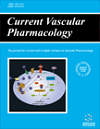
Full text loading...
We use cookies to track usage and preferences.I Understand
Atrial fibrillation (AF) could present with slow ventricular-response; bradycardia could facilitate the emergence of AF. The conviction that one “does not succumb” from bradycardia as an escape rhythm will emerge unless one sustains a fatal injury following syncope is in stark difference with ventricular tachyarrhythmia (VA), which may promptly cause cardiac arrest. However, this is not always the case, as a life-threatening situation may emerge during the bradycardic episode, i.e., the development of bradycardia-induced VAs, which could be fatal if there is no prompt intervention.
An extensive review of the literature was undertaken with key words including but not limited to AF, bradycardia, bradyarrhythmia, AF and bradycardia, slow ventricular response, sinus node dysfunction, sick sinus syndrome, tachycardia-bradycardia syndrome.
AF is the commonest cardia arrhythmia worldwide and may be part of sick sinus syndrome, commonly presenting as bradycardia-tachycardia syndrome. Importantly, bradycardia-related cardiomyopathy and heart failure, as well as an adverse influence on brain function, may all be eluding consequences of this type of syndrome. Bradycardia could be the inciting mechanism for the occurrence of AF, and when the bradycardia is eliminated, AF may not recur. The bradycardia-related long-short-long sequence triggering VAs can be averted by pacing at rates ~80-110 bpm either via temporary or permanent pacing as needed.
Balancing the benefits and risks of bradycardia together with other risks of antiarrhythmic drug and/or pacing management of AF versus those of catheter ablation is indeed a vexing problem; all these issues are herein discussed, tabulated, and pictorially illustrated.

Article metrics loading...

Full text loading...
References


Data & Media loading...

